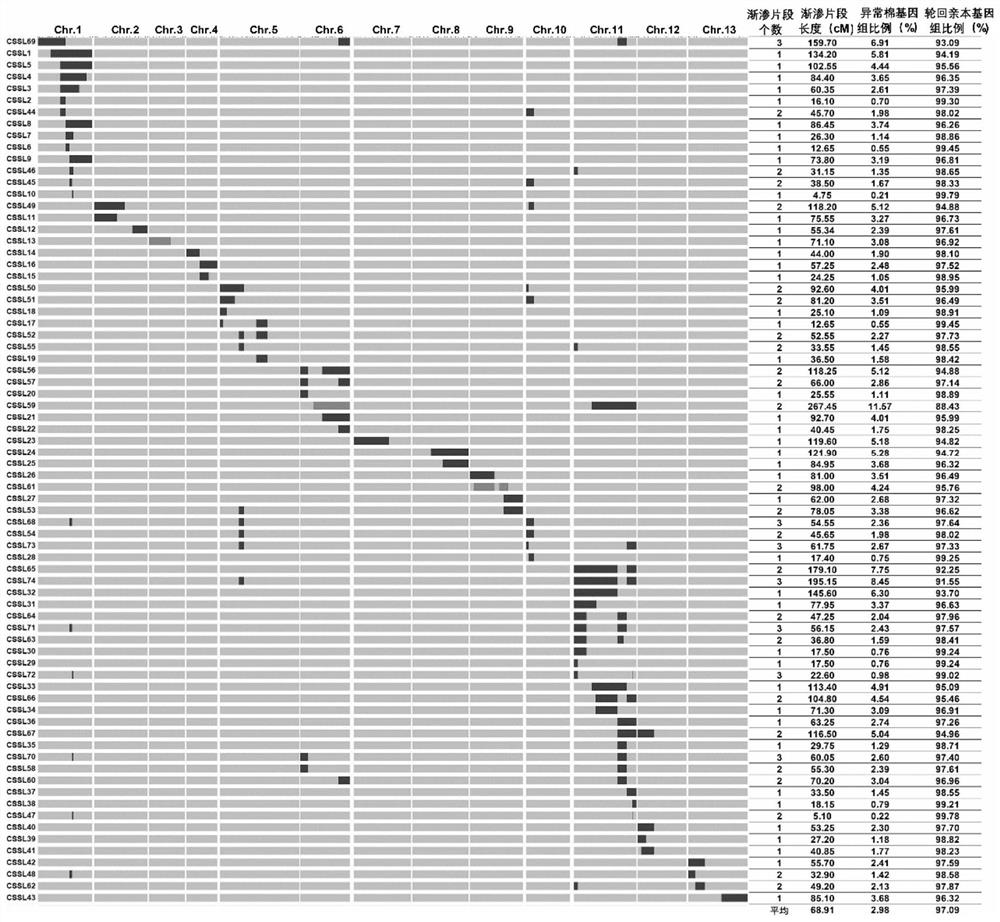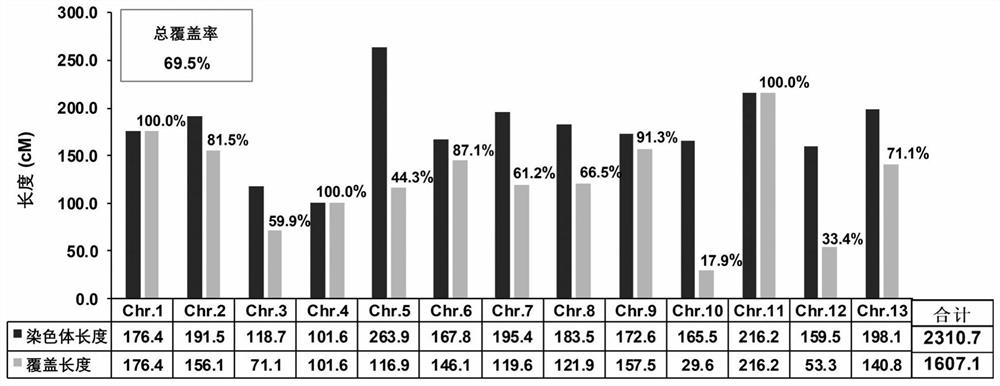Molecular markers of ssr associated with cotton dwarf and high lint
A molecular marker and lint technology, applied in biochemical equipment and methods, microbial determination/inspection, DNA/RNA fragments, etc., can solve the problems of difficulty in cotton yield, environmental pollution, time-consuming and labor-intensive, and achieve rapid and accurate identification. effect on sex and stability, improving selection efficiency and breeding speed
- Summary
- Abstract
- Description
- Claims
- Application Information
AI Technical Summary
Problems solved by technology
Method used
Image
Examples
Embodiment 1
[0051] Example 1. Determination of chromosome fragments related to cotton dwarf and high lint traits and development of related molecular markers
[0052] The short bar high lint cotton in the present invention is cultivated by the following steps:
[0053] Using upland cotton 86-1 as the donor, crossed with the male abnormal cotton to obtain triploid F 1 (A 1 D 1 B 1 ), hexaploid F was obtained by treating the young axillary buds of triploid seedlings with 0.15% colchicine 1 (A 1 A 1 D 1 D 1 B 1 B 1 );
[0054] Taking the hexaploid as the female parent, it was crossed with the parent Su 8289 to obtain the pentaploid A 1 A 1 D 1 D 1 B 1 , planting all the seeds received, resulting in 97 individual plants;
[0055] The obtained pentaploid was backcrossed with Su8289 to obtain BC 2 F 1 The seeds were all planted, and 384 individual plants were obtained, with 50 recombinant types, of which 36 were fertile;
[0056] will BC 2 F 1 All individuals of the 3 F 1...
PUM
 Login to View More
Login to View More Abstract
Description
Claims
Application Information
 Login to View More
Login to View More - R&D Engineer
- R&D Manager
- IP Professional
- Industry Leading Data Capabilities
- Powerful AI technology
- Patent DNA Extraction
Browse by: Latest US Patents, China's latest patents, Technical Efficacy Thesaurus, Application Domain, Technology Topic, Popular Technical Reports.
© 2024 PatSnap. All rights reserved.Legal|Privacy policy|Modern Slavery Act Transparency Statement|Sitemap|About US| Contact US: help@patsnap.com










